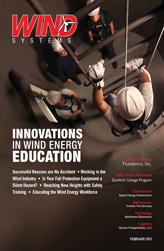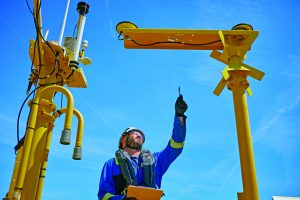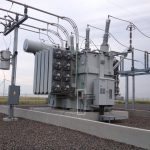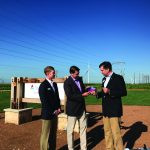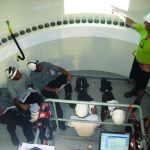The extension of the Production Tax Credit (PTC) in the first few days of 2013 was cause for post-Christmas celebration for companies in the wind industry. The interesting, and particularly useful, twist to the most recent extension of the PTC lies in its requirement that PTC eligible projects must start construction prior to January 1, 2014.
In the past, PTC eligibility has been tied to project completion at the end of the year, thus often resulting in the performance of erection and commissioning activities in winter conditions. By tying PTC eligibility to end-of-year construction commencement, it is likely that a large number of wind projects will begin project mobilization and civil work in the late fourth quarter of this year.
Simply put, if contractors didn’t have to work in the winter, they probably wouldn’t. Few wind construction activities get easier or safer in colder conditions. Productivity can decrease, and schedules and costs can increase. Owners and contractors must have an in-depth understanding of the costs and time impacts of starting wind projects in the winter. Here is a brief overview:
Road and Civil Work Issues
Frozen Soil and Compaction: Freezing temperatures make earthwork difficult. Road and crane pad surfaces must meet specified compaction requirements. Placing frozen soil on road and crane pad surfaces is risky, as the strength of frozen soils is more difficult to measure and to control. Care must be taken to insure that roads and crane pads have proper moisture content prior to compaction and that compaction levels are attained. Extreme conditions may prevent these surfaces from obtaining the required compaction.
Reclamation: Many wind projects require reclamation and/or reseeding of certain construction features and areas. Low temperatures and frozen soil may prevent reclamation and reseeding until the weather is more favorable, possibly after the project is substantially complete.
Snow Removal: Heavy snow can restrict road travel and impact wind project safety. Snow removal equipment and personnel should be readily available during winter construction in snow-prone areas.
Foundation Construction Issues
Material Heating: Low temperatures adversely affect concrete placement and curing. Concrete, aggregate, reinforcing steel and the surrounding ground must be heated appropriately to allow for the proper placement and curing of the wind turbine foundations. The subsurface must be prevented from freezing, so ground temperatures should be controlled by keeping the ground warm or heating it prior to concrete placement. Foundation Heating/Hoarding: Once the foundation is poured, it must be protected from low temperatures until properly cured. Insulating blankets and straw are effective and should be a part of the winter wind construction planning.
Equipment/Material Issues
Cold Engines: Low temperatures create numerous issues for heavy equipment. One solution for critical equipment (i.e. main erection and support cranes) is to keep engines running during non-working hours. This can prevent low temperature start-up issues, as well as keeping the engine lubricants heated and operating as intended.
Tower Components: Road grime accumulates on wind tower components more readily during winter deliveries, making cleaning more difficult and time-intensive. Cleaning should be done with environmentally-friendly antifreeze, or delayed until warmer weather.
Electrical Issues
Trench Excavation and Compaction: Trenching frozen ground can be difficult, and in some instances, impossible. If at all possible, trenching should be performed before the soil becomes frozen. In addition, trench backfill must be compacted to appropriate levels. Frozen ground cannot be used for backfill, as compaction will be difficult.
Cabling: Low temperatures make most medium and high voltage cable less flexible. Installation is more difficult to manage, especially in tight foundation and termination areas.
Outage Restrictions: Utilities rely on generation redundancy in the winter to prevent power disruptions for customers. During the winter, the transmission provider may be less flexible in permitting an outage for the interconnection tie-in.
Health/Safety/Productivity
Exposure to Cold Temperatures: Low temperatures are dangerous. All project personnel must be protected properly with adequate clothing and working conditions. Cold weather safety training, block heating accommodations and hot beverages are typically provided to assist in worker safety and productivity.
Visibility Concerns: Blowing snow can create severe visibility issues. All work activities can be affected, especially those involving turbine component unloading and wind turbine erection. Safety must not be compromised if visibility if below established minimums required for performance of a particular task.
















